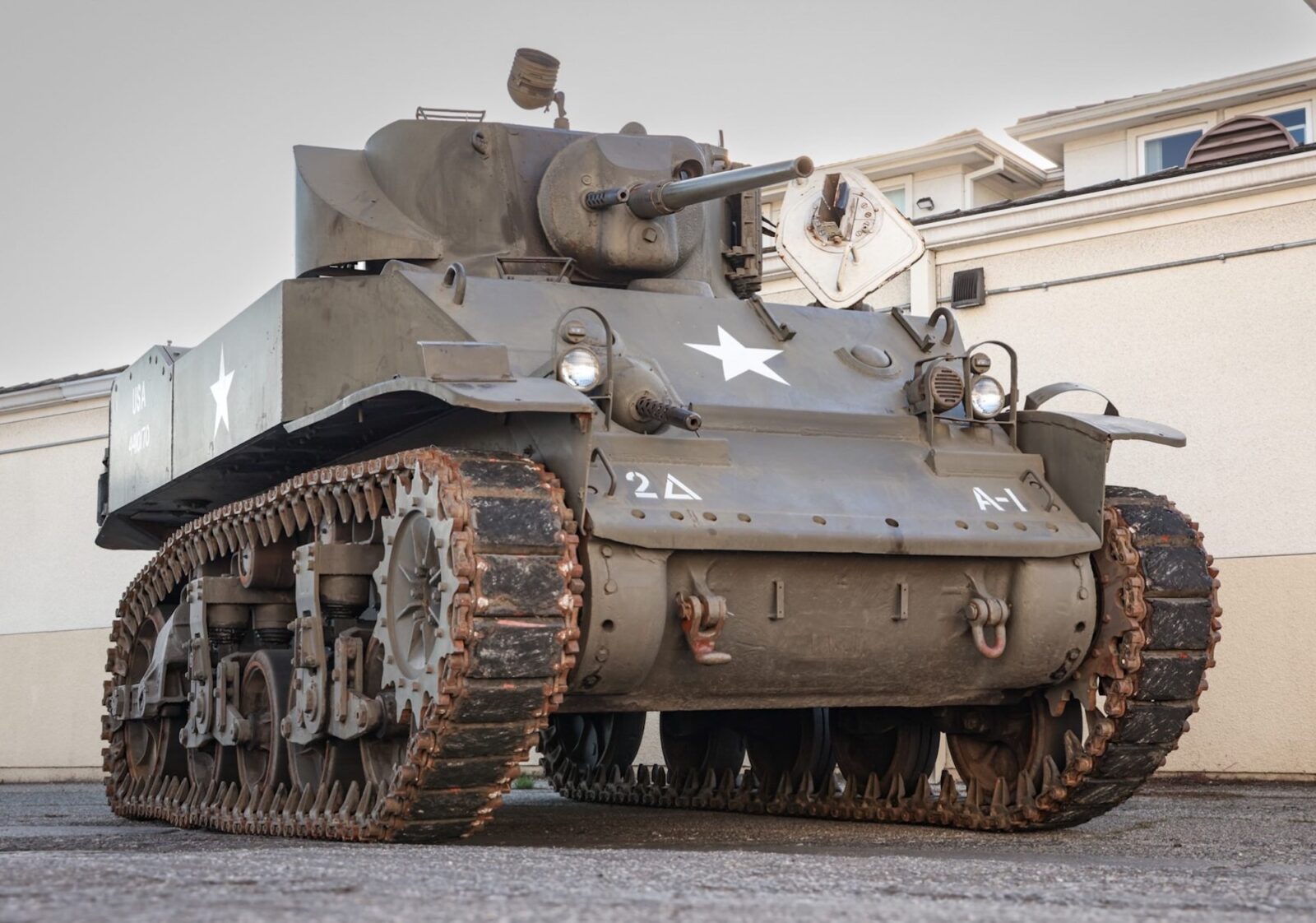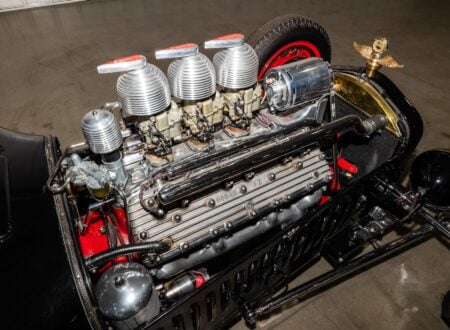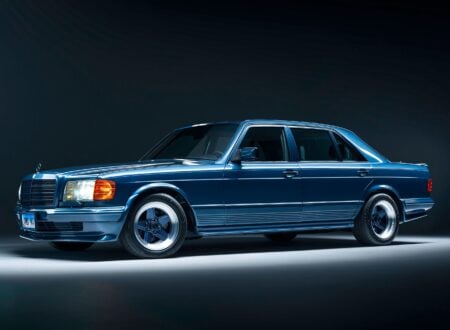This is an original WWII-era 1943 Stuart M5A1 tank that remains in operational condition, with both its Cadillac L-head V8s in place and working, its main gun and machine guns have been decommissioned for obvious reasons.
The Stuart M5 series were one of the most common American tank types of the Second World War, though relatively few have survived to the current day. Those that have survived are largely in museums, though there are a handful in private ownership – like the example you see in this article.
Fast Facts: The Stuart M5A1 Tank
- This 1943 Stuart M5A1 is a WWII-era American light tank that remains fully operational, keeping both of its original 346 cubic inch Cadillac L-head V8 engines. Its weapons has been decommissioned, but the tank still runs and drives, thanks to its advanced twin-engine, twin-Hydramatic transmission setup that was a breakthrough for armored vehicle engineering.
- The M5 series evolved from the earlier M3 Stuart, replacing the aircraft-derived radial engine with dual Cadillac V8s for improved reliability, lower noise, and better ergonomics. Introduced in 1942, the M5A1 version featured a welded hull, sloped armor, a gyro-stabilized 37mm M6 gun, and a new turret design with a rear radio bustle.
- The M5A1 saw service across all major WWII theaters. In Europe, it was used for reconnaissance and flanking operations, while in the Pacific it proved more effective against lighter Japanese tanks. It was also employed by Allied forces including the British, Free French, Chinese Nationalists, and Soviets, and remained in postwar service with several nations into the 1950s.
- This example, finished in period-correct olive drab with white military markings, has a hydraulically operated turret, dual-pin tracks, and a white-painted four-crew interior complete with gauges, tiller controls, and a “Little Joe” auxiliary generator. Offered from a private Alabama collection, it’s now listed for sale on Bring a Trailer in Los Angeles, California.
History Speedrun: The Stuart M5A1 Tank
When the United States entered World War II its armored capabilities relied heavily on the M3 Stuart, this was a compact light tank that had proven effective in North Africa but was already showing its age. The M3’s aircraft-derived radial engine was also noisy, unwieldy in its dimensions, and difficult to armor effectively. By 1942, the Ordnance Department was seeking a new design that kept the M3’s overall mechanical simplicity but improved on all key areas – namely protection, reliability, and crew ergonomics.
Above Video: This short video from The Tank Museum offers an excellent look at the history, specifications, and war-time use of the Stuart M5A1 tank.
The result was the M5. Instead of the M3’s Continental W-670 radial, engineers installed a pair of Cadillac Series 42 V8s, each turning out roughly 110 bhp, driving a pair of Hydra-Matic automatic transmissions – this was an automotive first for a tank. This also freed up more of the W-670 production for aircraft use – its primary application.
The twin-engine setup provided a combined output of around 220 bhp and offered ample torque, as well as smoother, quieter operation all around. The new powerplants were mounted lower in a revised welded hull with sloped armor, improving crew space but not significantly reducing the tank’s overall height.
Early production M5s entered service in 1942, but the M5A1, introduced later that year, was the definitive version. It used a new turret derived from the M3A3, with a rear bustle for radio equipment, a gyro-stabilized 37 mm M6 gun, and a coaxial .30 cal Browning machine gun. The hull’s armor thickness ranged from 9.4 mm to 50.8 mm (0.37 to 2.0 inches), and it weighed around 15 tons combat-loaded. Top speed was around 36 mph (58 km/h), and operational range was up to about 100 miles (160 km) on paved roads – less when off-road.
The M5A1 served in nearly every theater of the Second World War. In North Africa and Italy, it replaced earlier M3 variants in cavalry and reconnaissance units. Its speed and agility were invaluable for flanking and screening operations, though its 37mm gun was increasingly ineffective against German armor like the Panzer IV and Panther. American crews quickly learned to use the Stuart’s mobility for hit-and-run tactics, relying on artillery and air support to handle heavier targets.
In the Pacific, the M5A1 entered service later, first seeing combat with the US Marine Corps during the Roi-Namur landings in February 1944. Japanese tanks, typically lighter and more thinly armored, were vulnerable to the 37mm gun, and the M5A1’s maneuverability proved to be a major plus in jungle operations. US Army and Marine Corps units used it through the Marianas and the Philippines campaigns, while British and Commonwealth forces operated their own versions – designated Stuart VI.
The M5A1 also saw service with the Free French, Chinese Nationalist, and Soviet forces under the Lend-Lease program, though the USSR received only a handful compared to earlier M3 variants. After the war, surplus vehicles continued to serve with a number of nations, including China, Cuba, and Yugoslavia – well into the 1950s.
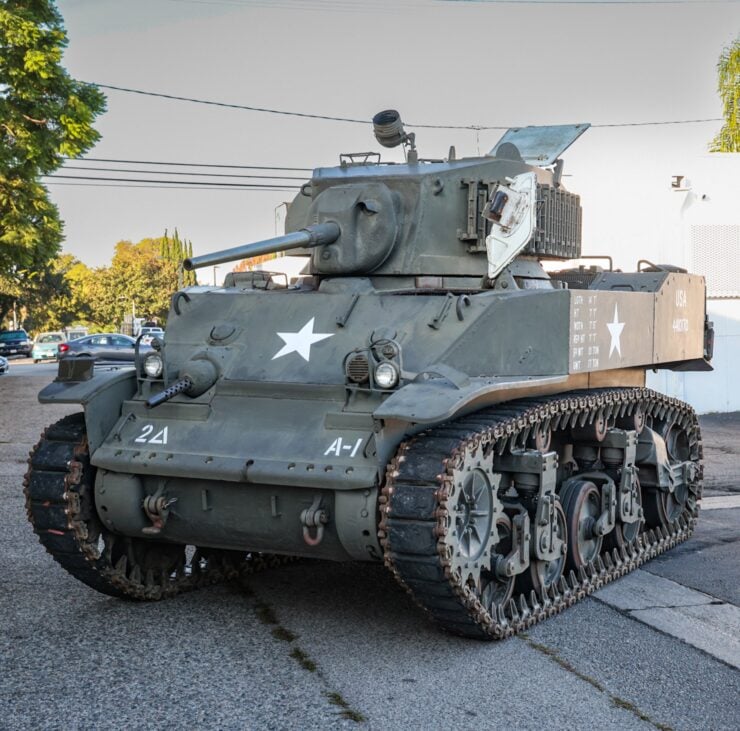

The M5A1’s immediate predecessor, the M5, lacked the extended turret bustle and improved layout of the A1. Specialized versions included command tanks without the main gun and a few experimental flamethrower conversions (namely the E5R1-M3 and E7-7), though the better-known “Satan” flamethrowers were based on the earlier M3A1. A limited number of reconnaissance and anti-aircraft prototypes were also tested but not widely adopted.
Although well-liked by crews, the Stuart’s light armor limited its long-term utility. By 1944, the M24 Chaffee, which was fitted with a 75 mm gun and torsion-bar suspension, began to replace the M5A1 in front-line roles. Even so, many M5A1s continued serving in secondary duties until the war’s end, and a number remained in training and Allied inventories for years afterward.
Over 8,800 examples of the M5 and M5A1 were built between 1942 and 1944 by Cadillac, American Car & Foundry, and the Massey-Harris Company. While the M5A1 never rivaled the firepower of medium tanks like the Sherman, its ease of operation and reliability made it one of the most successful light tanks of the conflict. Its dual-Cadillac powertrain concept also influenced postwar armored-vehicle design, showing that mass-produced automotive-sourced components could function effectively in military service.
The 1943 Stuart M5A1 Tank Shown Here
This Stuart M5A1 was built in 1943, it’s a well-preserved example of the final evolution of America’s World War II Stuart series of tanks and it’s been part of a private Alabama collection for years.
It retains its original welded steel hull and hydraulically operated rotating turret, all finished in period-correct olive drab with white stenciled military markings. Its turret is fitted with a de-commissioned 37mm M6 gun and paired non-functioning machine guns, along with working lighting and a gyrostabilizer system typical of late-production M5A1s.
As you would expect, power comes from twin 346 cubic inch Cadillac L-head V8s, each producing 110 bhp, these are linked to individual four-speed Hydramatic automatic transmissions and a dual-range transfer case that delivers power to both track drives.
The tank rides on dual-pin steel tracks with rubber pads, four spoked road wheels per side, rear idler wheels, and three return rollers, supported by vertical volute spring suspension.
The interior is finished in white and keeps its original four-man configuration, with adjustable seats for a driver, co-driver, gunner, and commander/loader. Controls include ceiling-mounted tillers, a central instrument panel with dual tachometers, oil pressure and coolant gauges for each engine, and an (optimistic) 80 mph speedometer.
The odometer reads 407 miles, though total mileage is unknown. Auxiliary equipment includes shelving, storage bins, and the “Little Joe” auxiliary generator used to maintain battery charge for the 12 volt electrical system.


The hull and turret show some age-related wear, including paint cracking and light corrosion consistent with static display use. Despite its demilitarized armament, this M5A1 is still a mechanically complete and functional example of one of World War II’s most recognizable American light tanks.
It’s now being offered for sale out of Los Angeles, California on Bring a Trailer on a bill of sale. If you’d like to read more about it or register to bid you can visit the listing here.
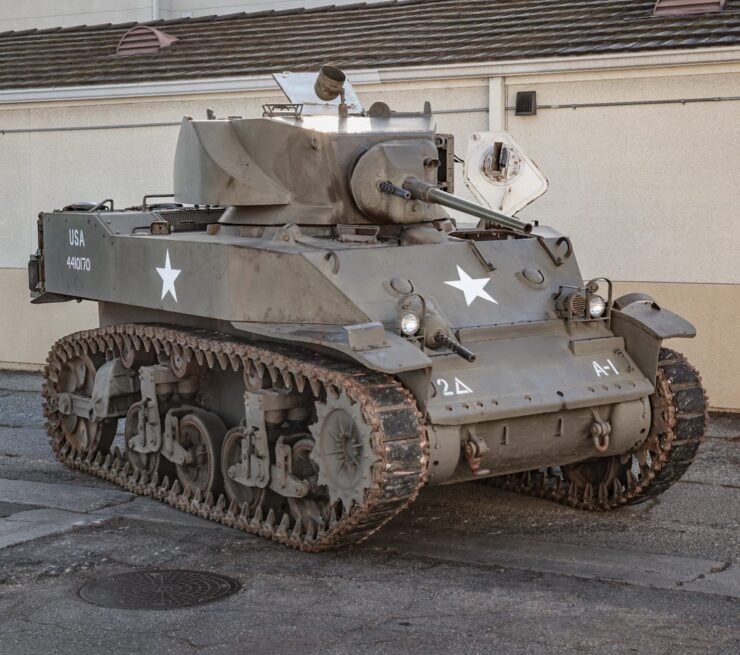
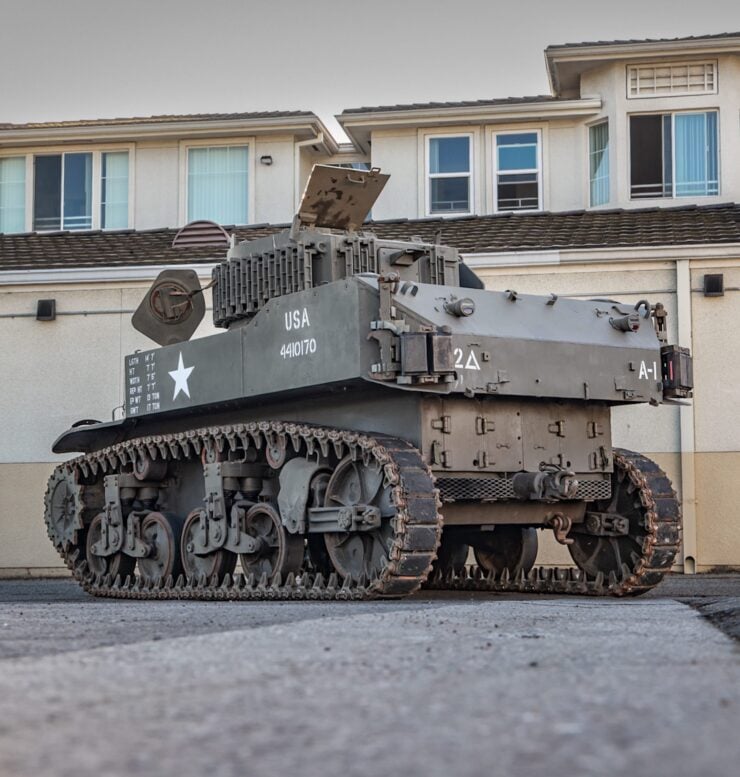
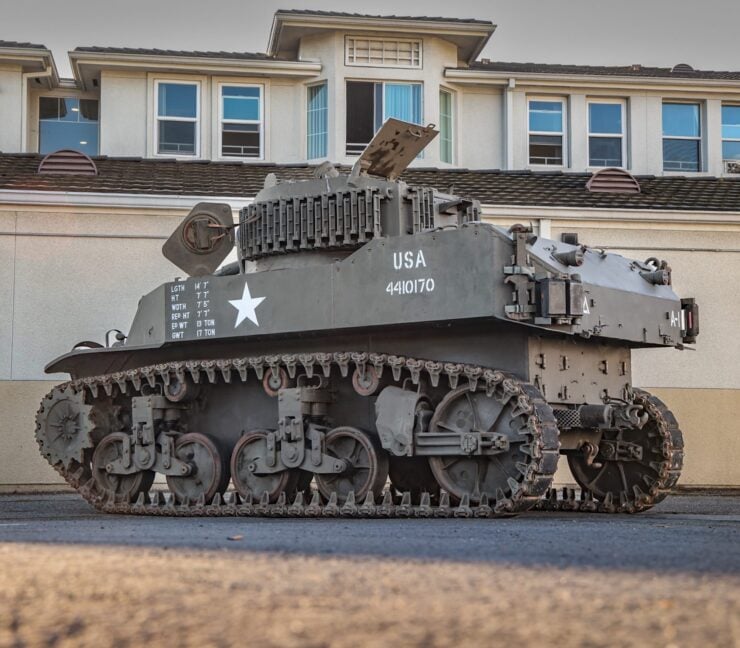
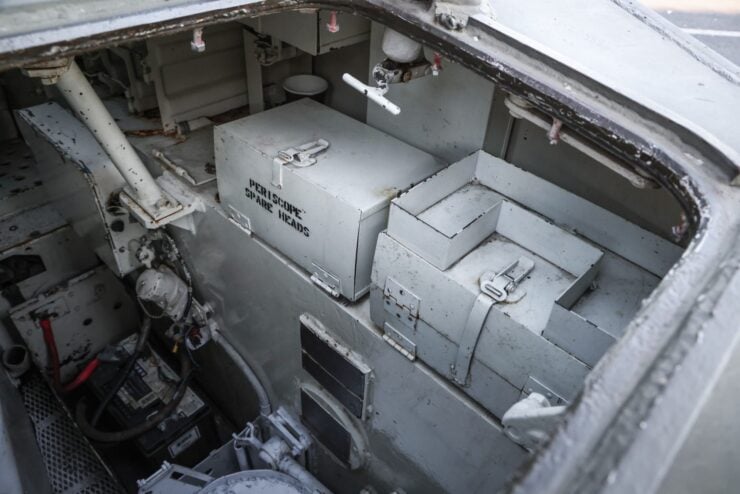
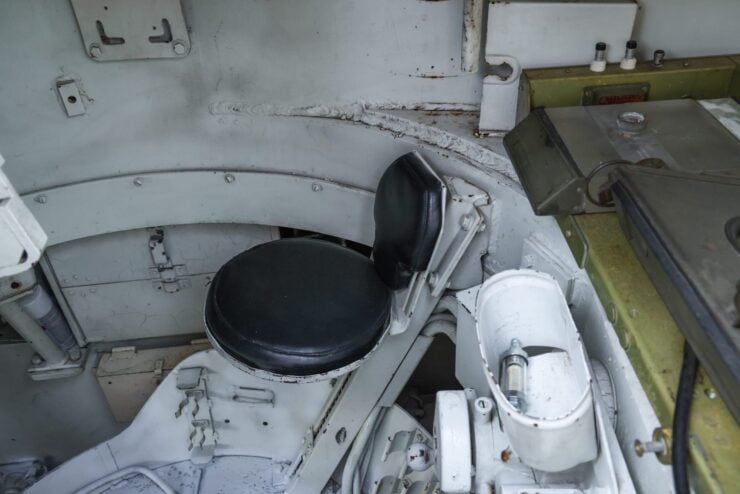

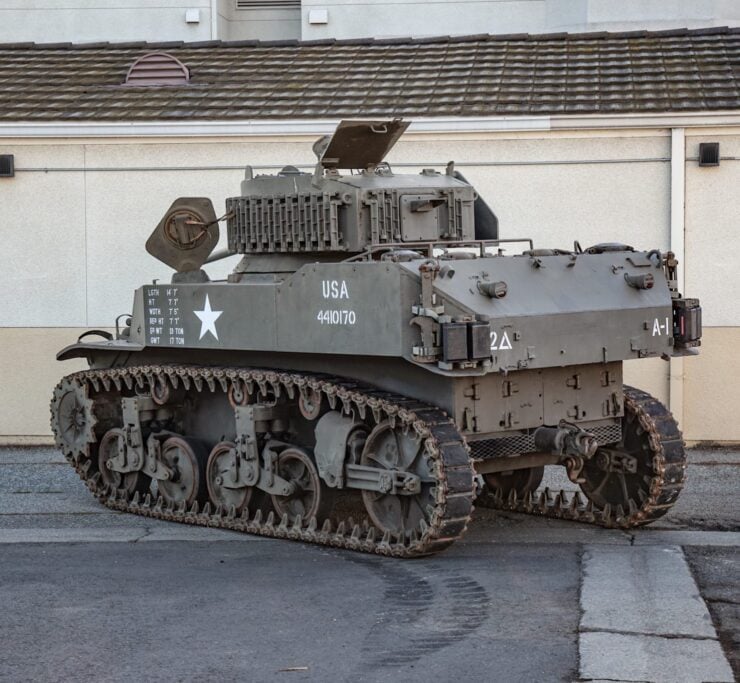
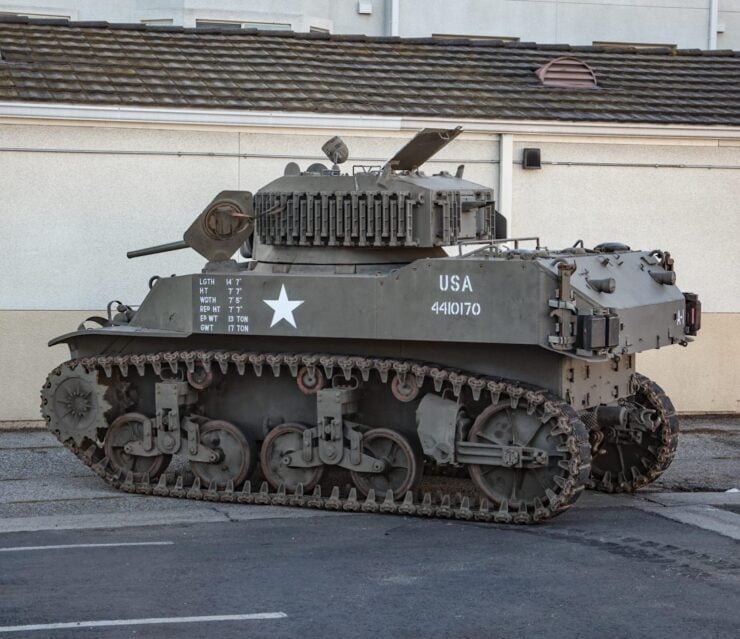
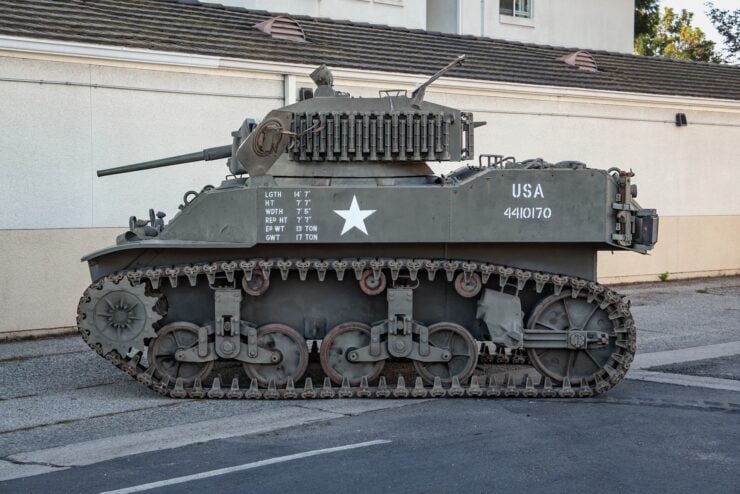
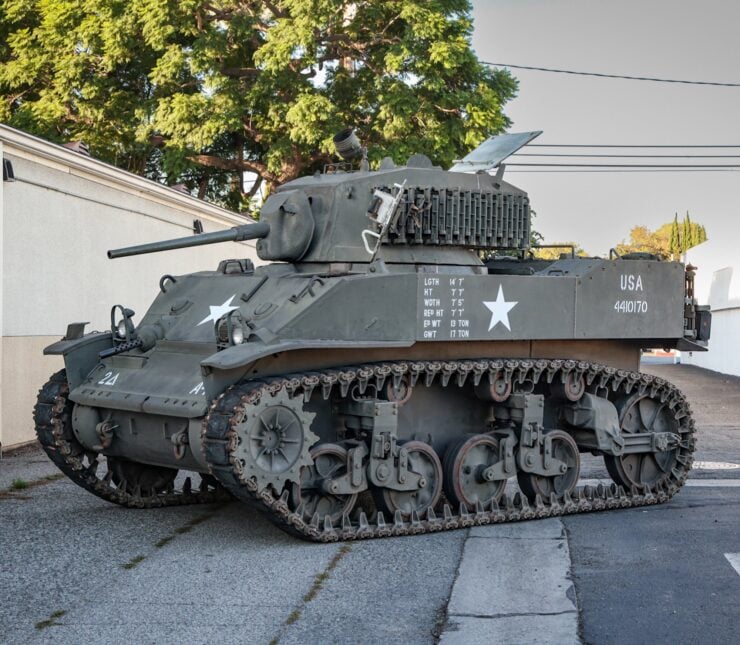
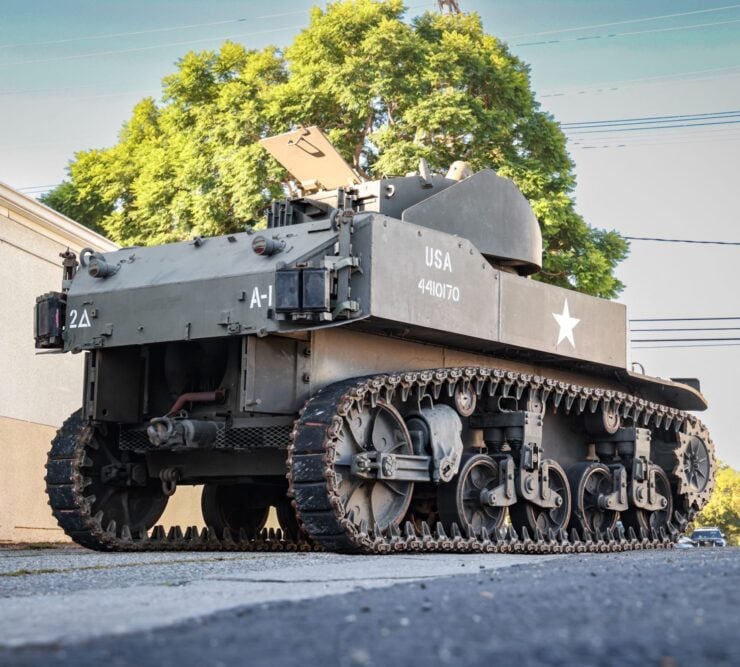
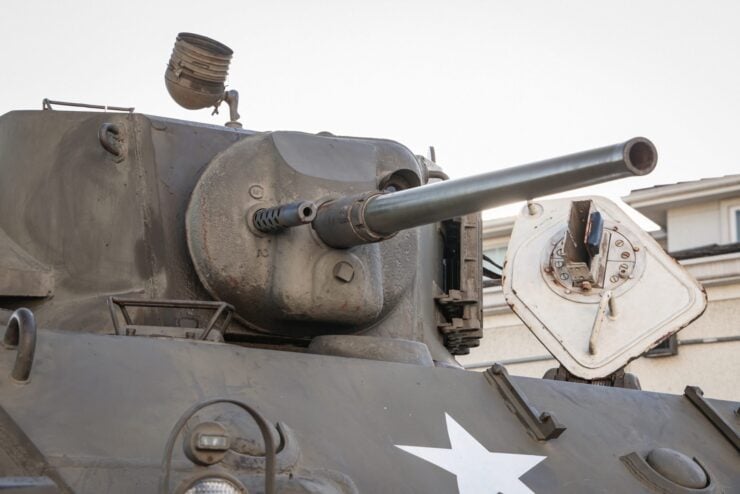

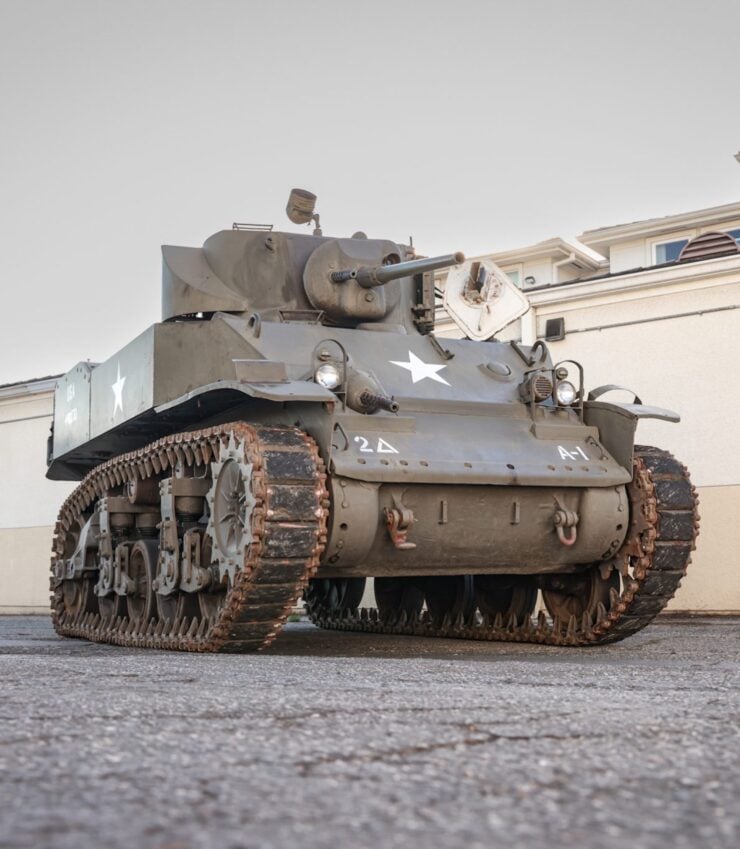
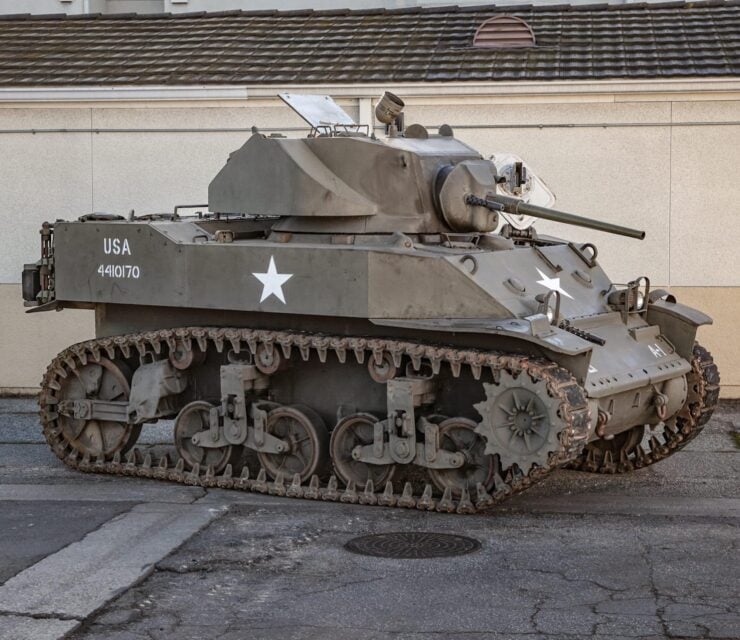
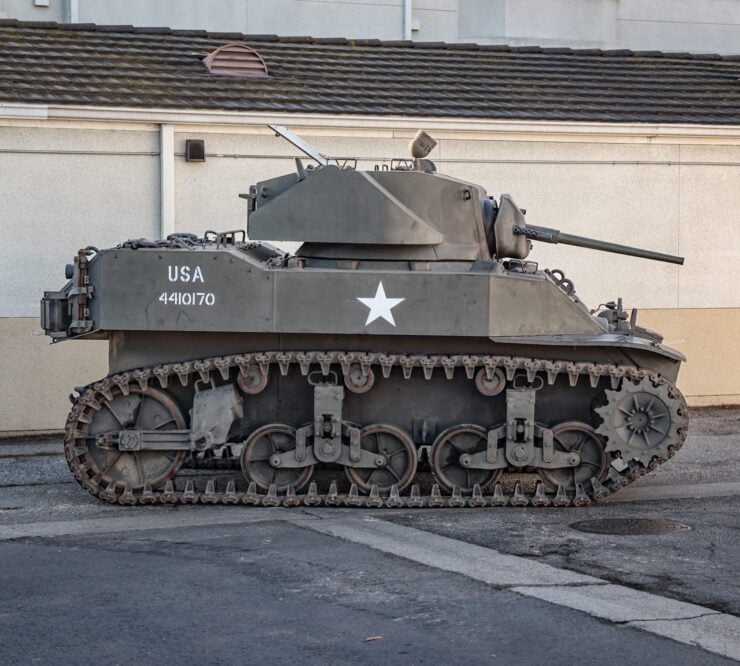
Images courtesy of Bring a Trailer

